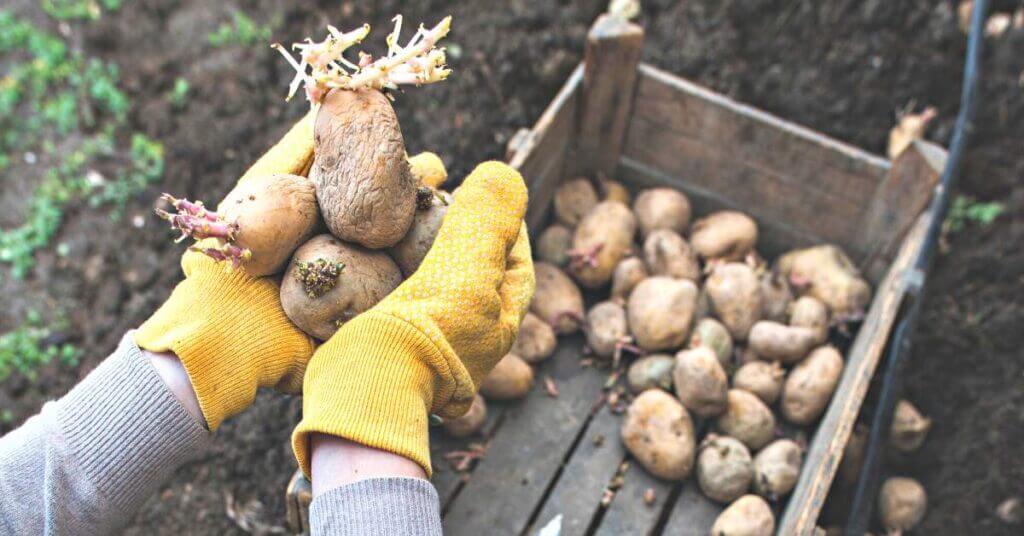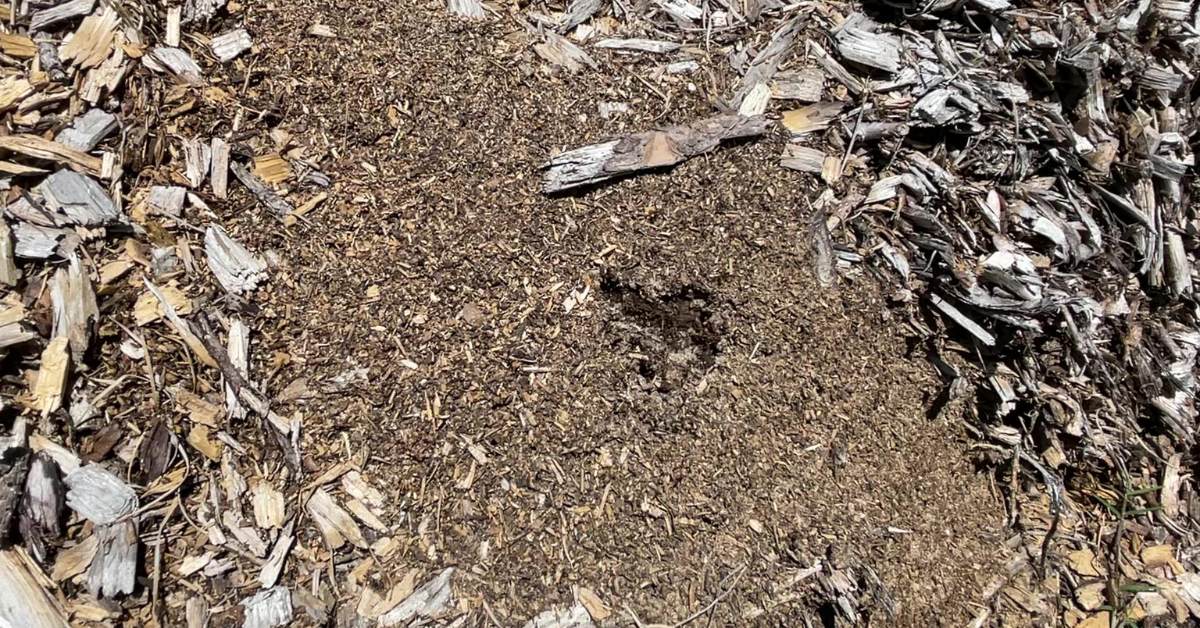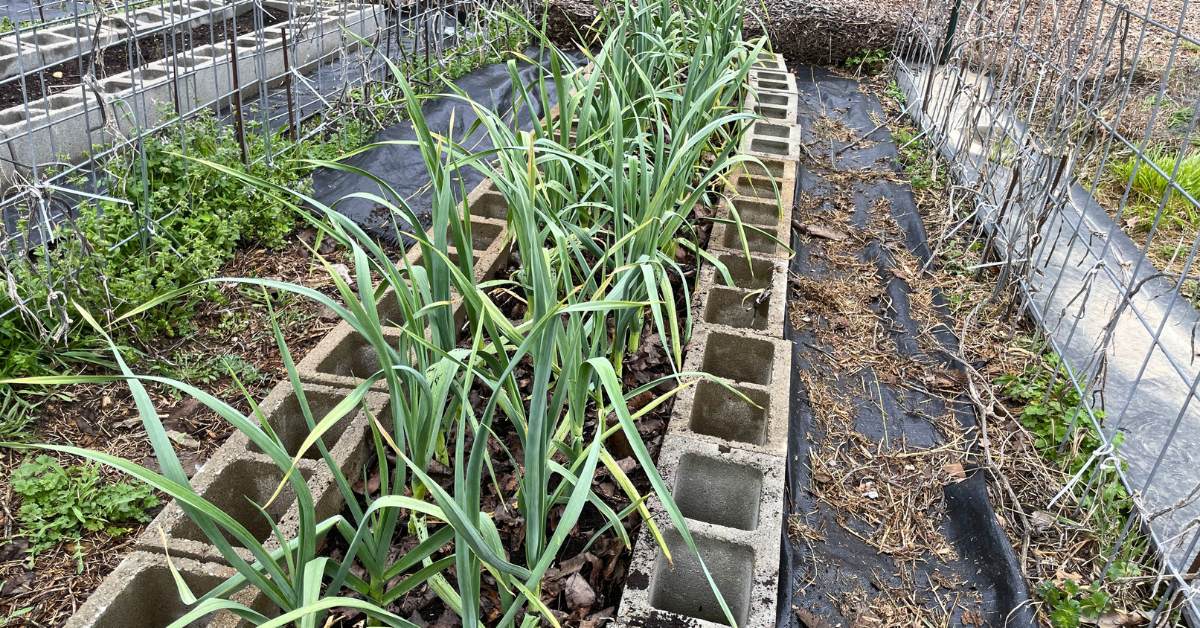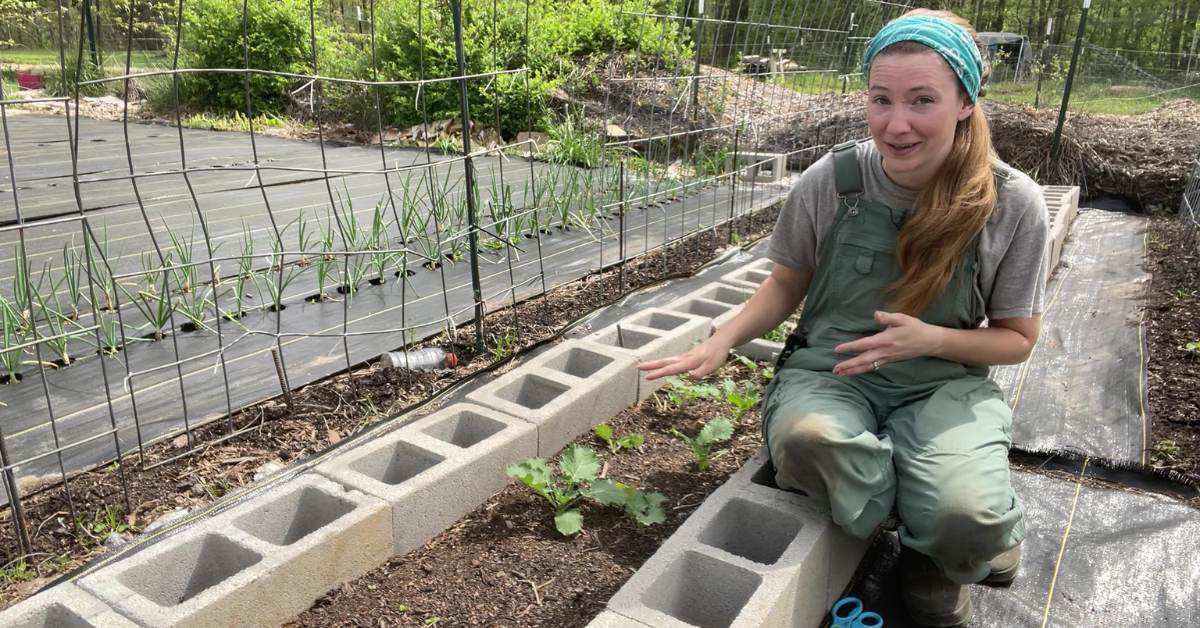If a new gardener, whose primary goal was to grow their own food, asked me what plant to start with, I’d say potatoes.
Despite a few horror stories here and there, potatoes really aren’t that hard to grow.
As long as you know a few basics regarding what potatoes need to grow into large, plump tubers, you’ll be successful.
Not quite convinced yet? Keep reading—and definitely don’t cut out before you see my “lazy man’s potatoes” approach below.
Potatoes Are One of the Easiest Crops to Grow
Some believe growing potatoes is difficult, but let’s set the record straight. These versatile veggies can flourish almost anywhere, from spacious gardens to compact pots and bags on your balcony.
I mean … you can literally grow potatoes from potatoes that you get at the grocery store. How easy is that?!
Whether you’re nurturing first early, second early, or maincrop potatoes, each type has its own schedule and climate preference, making potatoes a great choice for gardeners across different regions. (For most regions, early spring is go time for potatoes.)
This adaptability and the range of options available debunk the myth that potato growing is only for those with a green thumb or vast plots of land.
In reality, potatoes offer a friendly start for anyone wanting to start a garden.
(By the way, the key to successful planting is timing it based on soil temperatures.)
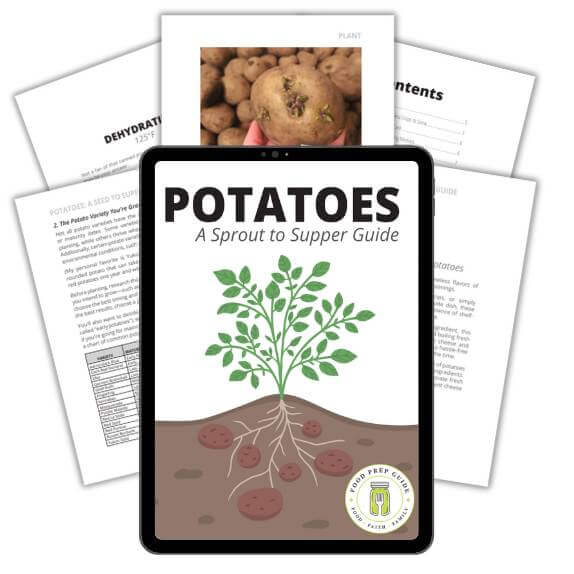
Master Potatoes From Seed to Table
Get growing & preserving faster with no-fluff tutorials for every step from plant to plate!
The Realities of Potato Plant Care
Based on our introduction, you might think tending to potato plants is a walk in the park, but there’s certainly still work involved.
For starters, you’ll want to plant potatoes at the right time for your area.
Also, watering can’t be hit or miss; potatoes crave consistent moisture, especially during the peak of their growth. Too little water spells trouble, leading to small tubers, while too much can drown them or encourage disease.
Fertilizing is similar in that there’s a balance you need to strike. Also, you definitely want to space potato plants far enough apart that they don’t compete for nutrients.
Let’s discuss all the ins and outs in more detail.
Watering Potatoes

Keeping your potato plants hydrated strikes a delicate balance, especially critical during the tuber formation phase. Too little water, and you’ll notice the plants begin to wilt, their growth stunted, leading to smaller tubers.
This underlines the need for consistent moisture, ensuring the soil feels damp but not soggy.
On the flip side, overwatering brings its own set of issues, such as yellowing leaves and waterlogged roots, which can pave the way for rot.
Regular checks on soil moisture level and adjusting your watering schedule to accommodate for dry or wet weather helps ensure your potatoes get just what they need for optimal growth.
As a general rule of thumb, potatoes need about two inches of water per week.
Fertilizing Potatoes
Potato plants are hungry fellas; they thrive on a diet rich in organic matter.
You’ll want to mix compost into well-drained soil before planting provides them with a steady flow of nutrients as they grow.
(If you’re interested in more details, here’s our guide for the best soil for growing big potatoes.)
Midway through the season, apply a balanced 10-10-10 fertilizer to give them an extra boost. Just scatter it lightly around the base of the plants.
Remember, potatoes dislike too much of a good thing. Over-fertilizing can lead to lush foliage at the expense of the tubers themselves.
Stick to using just enough to support their growth without going overboard. This balanced approach ensures your potatoes get everything they need without any negative side effects.
Hilling Potatoes
Hilling potatoes might sound like a fancy gardening term, but it’s simply the process of piling a few inches of soil around the base of potato plants.
This technique is key for a few reasons. First, it safeguards the developing tubers from the harsh sun, which can turn them green and toxic.
Also, hilling supports the plant, providing a stable environment for growth.
Here’s a quick guide to get you started:
- Step 1: Wait until your potato plants are about 6 inches tall. This is the perfect height to begin.
- Step 2: Using a hoe or shovel, gently mound loose soil from the surrounding area around the base of each plant. Aim for a hill of about 4 to 6 inches high.
- Step 3: Repeat this process every few weeks as your plants grow. You’ll usually need to hill 2-3 times per growing season, but that will depend on how long it takes for your chosen potato variety to grow.
By following these steps, you’re not just preventing potential sun damage and green potatoes; you’re also creating an environment where your potato plants can thrive.
Dealing with Potato Pests

You might find yourself a bit unnerved when Colorado potato beetles make an appearance in your garden.
These pests have a knack for munching through potato plants and are capable of causing significant damage if left unchecked.
So, what can you do? This is where some natural pest control comes in handy. Think along the lines of inviting beneficial insects by planting diverse flora or using barriers like row covers to protect your tender plants.
A regular inspection routine plays a pivotal role too. You want to catch these critters early for a fighting chance to minimize their impact.
Simply put—don’t wait until your potato plants look like Swiss cheese. Early intervention, through either removal by hand where practical or utilizing organic pesticides as a last resort, can save your crop.
Remember, with pests, the best defense is a good offense.
Preventing Potato Diseases
Like any garden venture, growing potatoes comes with its challenges, including the dreaded diseases that can pop up and wreak havoc on your crop.
Potato blight, for instance, is a notorious fungal infection, turning leaves brown and causing tubers to rot. It’s a sigh-worthy moment for any gardener to find their potatoes under siege by such diseases.
Yet, there’s hope for prevention and action that can keep your potato plants healthier.
Success starts at the very beginning by using disease-resistant potato varieties. Garden centers and seed catalogs often list potatoes that can stand up better against common diseases, so look for those that are specific to your area.
Next, watering plays a role. Keep the foliage as dry as possible by watering the base of your plants early in the day.
This way, the leaves can dry out before the cooler evening temperatures roll in, reducing the risk of fungal diseases taking hold.
If, despite these efforts, you notice your potato plants sporting the tell-tale signs of disease—whether it’s the melancholic wilt of blight or the unsightly spots of other infections—act swiftly.
Remove affected foliage to stave off the spread. Worst case scenario, just harvest the tubers early to save your crop from total loss. (You’ll basically end up with new potatoes or baby potatoes.)
Sustainable gardening involves not just enjoying the fruits (or tubers) of your labor but also being vigilant and responsive to the needs and threats facing your plants.

Dream of Filling Your Pantry with Homegrown Staples?
Plan your garden with our FREE PRINTABLE—Staples Garden: What to Plant to Feed Your Family for a Year!
The ‘Lazy Man’s’ Potato Growing Method
We experimented last year with a different way of growing potatoes, and it turned out to be the easiest method by far.
We’re big proponents of a no-till approach to gardening, but living in the South with heavy clay soil posed a challenge.
So we devised a plan to revolutionize our potato patch and, in turn, prep the ground for future beds.
To start, we planted potatoes directly on the soil surface; that’s right – no digging. Then, we simply covered our grocery store potatoes with straw. (You can use spoiled hay or straw mulch.)
As the potatoes grew, we kept layering on the straw, ensuring 4 to 6 inches of the plant remained above the mulch line.
Fast forward to harvest day, and what we discovered beneath the surface blew us away.
(By the way, here are the signs that indicate your potato plants are ready to harvest.)
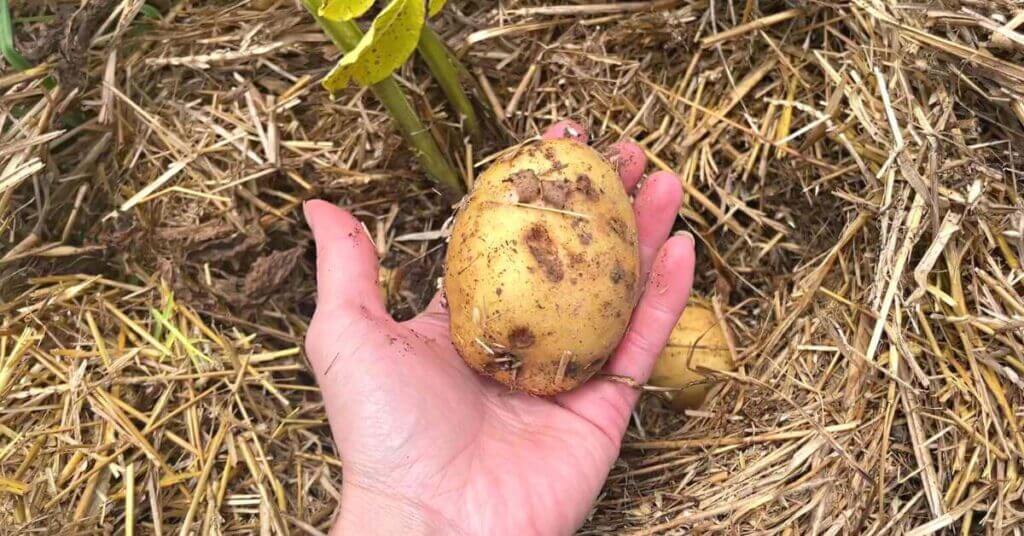
As I peeled back the straw, I was greeted by soil—rich, dark, and teeming with life. Worms wriggled everywhere, feasting on the remnants of rotting seed potatoes.
It was a sight to behold, a testament to nature’s remarkable ability to regenerate.
Not only did we grow potatoes the easiest way possible, but we prepped that ground for future garden beds without heavy labor.
Just one word of caution if you try this method:
Make sure your hay or straw hasn’t been sprayed with herbicides like Grazon.
If you’re tight on space, try grow bags made specifically for potatoes. This can be fairly easy approach, too.
You’ll just fill your grow bag or pot with a mix of potting soil and compost. Drop in a few seed potatoes, and cover them with 3 to 4 inches of your soil mix.
As shoots appear, keep adding soil to cover them, leaving just the tops exposed. This encourages more tubers to form along the buried stems.
This approach is perfect if you’re strapped for space, living in an apartment, or just don’t want to turn over a garden plot.
Grow bags and pots can sit happily on balconies, patios, or any sunny spot.
Come harvest time, you simply tip over the container, sort through the soil, and collect your bounty. Whether you’re a gardening newbie or just looking for a fuss-free method, this one’s a winner.
Easy or Hard? You Decide
Some find it straightforward, while others believe it’s like solving a complex puzzle. Your experience will likely sit somewhere in between, influenced by your garden’s specific conditions, available resources, and your dedication.
At its core, potato gardening embodies a blend of simplicity and challenge, perfect for those ready to dip their hands into the soil.
Remember, each potato plant you nurture has its own set of needs—consistent watering, timely fertilizing, and vigilant pest management.
So, is growing potatoes hard? Let’s say it’s rewarding.
The satisfaction of unearthing your first batch of home-grown potatoes is unparalleled.
Consider the resources you have, your willingness to learn, and the space available. Whether it’s a sprawling garden or a modest balcony setup with grow bags, potatoes are accommodating. They ask for little yet give much in return.
In the end, the question isn’t really about how hard it is to grow potatoes. It’s about the adventure you’re willing to embark on.
With a bit of soil under your nails and sun on your back, you might just find joy in watching those green shoots break ground. Go ahead, plant a seed potato, give it love and attention, and let nature do the rest!


